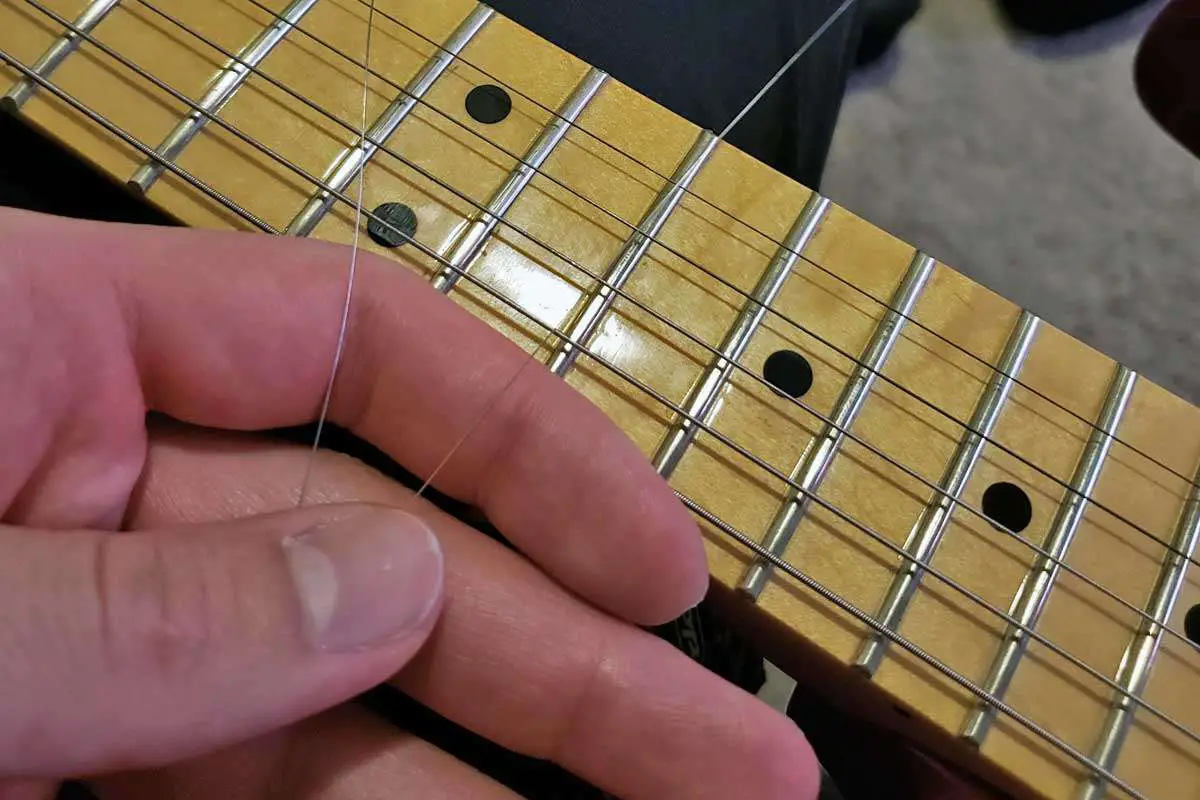We receive this question a lot from newbies: “How often do guitar strings break?” Well, when maintained in the right conditions, guitar strings can be incredibly resilient, often lasting for months and even years without breaking. Their longevity is largely influenced by factors such as the frequency of play, the level of maintenance, and the environmental conditions where your guitar is kept. Quality strings, properly installed & regularly cleaned, can resist breakage due to corrosion & wear.
While it’s not common, strings can sometimes snap aburptuly. This typically happens during tuning if the string is wound too tight, from the impact of an aggressive playing style, and sometimes you just get a bad set. Keeping an eye on the condition of your strings and knowing how to spot the early signs of wear and tear will help prevent unexpected breakages and ensure your guitar consistently produces a quality sound.
Certain compositions may lead to increased stress on strings, but under standard conditions, the durability of modern strings means they shouldn’t frequently break. Ensuring your guitar’s neck and fretboard are kept in good condition and that you’re using the correct string gauge for your playing style further reduces the chances of snapping a string outside of its expected lifespan.

Factors Influencing Guitar String Longevity
Your guitar strings’ longevity can be impacted by several factors, including material, maintenance, and playing habits. Understanding these can help you prolong the life of your strings.
Material & Type of Strings
Guitar strings come in a variety of materials and types, each offering different tones and levels of durability. Common materials include nickel, stainless steel, bronze, and nylon, with steel & nickel being favored for electric guitars, and bronze or nylon for acoustics. Coated strings, which have a thin protective layer, can also significantly extend string life by protecting against corrosion from sweat & humidity (metal strings).
Meanwhile, the type of string—whether roundwound, flatwound, or halfwound—also plays a role in longevity. Roundwound strings, the most common type, offer a bright sound but may wear faster due to their ridged texture which can accumulate grime and corrode more quickly. Flatwound strings, with a smoother surface, typically last longer and are less prone to dirt buildup, but they produce a mellower tone.
Ultimately, the choice of string materials and types directly affects not only the sound and feel of your guitar but also the frequency with which strings need replacing. Regular maintenance and proper care can help maximize the lifespan of whichever strings you choose for your instrument.
Guitar Maintenance and Care
Proper maintenance is key to preventing your strings from becoming worn-out or breaking prematurely. Cleaning your strings regularly can remove sweat and oils that contribute to corrosion. Keep your guitar in a controlled environment, as extreme humidity and temperatures can accelerate the deterioration of strings. Proper storage is equally important; when not in use, keeping your guitar in a case can protect the strings from the elements.
Playing Habits and Techniques
How you play guitar can affect how long your strings last. Aggressive bending and a heavy picking style can stress the strings, leading to quicker wear. Consistent, hard tuning, especially with alternate tuning, places additional tension on the strings, potentially shortening their life. Conversely, a lighter touch and less drastic changes in tuning can help your strings last longer. Regularly changing old strings before they become too corroded or worn-out can maintain good playability and tone.
Common Causes of String Breakage
When you play your guitar, you expect the strings to stay intact and sing. However, string breaks can occur due to a variety of factors, from the physical condition of the guitar to the environment it’s kept in. Understanding these factors can help you prevent unwanted breaks during important sessions.
Physical Factors
Your guitar’s physical components can greatly influence string longevity. For instance, sharp fret edges or burrs on the nut or bridge can act like blades, slicing into the string until it finally gives way. Regular inspection and maintenance of these areas can prevent such wear. Moreover, the type of guitar and the construction quality of components like saddles, tuning pegs, and the ball end of strings are crucial; these should be smooth and free from any rough spots to reduce stress on the strings.
String Tension and Guitar Setup
Proper setup of your guitar impacts how often strings break. High string tension—often from heavier gauge strings or tight tuning—exerts greater pressure on the string, particularly when performing techniques like bending. A well-maintained setup, with attention paid to the tuning pegs, nut, and bridge, along with selecting the appropriate string gauge for your style and standard tuning, can mitigate breakage risks.
Environmental Conditions and Usage
External factors such as humidity, temperature, and sweat can accelerate wear on guitar strings, leading to corrosion or rust. It’s important to change guitar strings periodically and store your instrument in a stable environment to avoid rapid deterioration. Moreover, your playing frequency and intensity play a part; vigorous playing without regular string changes or maintenance invites a greater chance of a broken string.
By paying attention to these elements and conducting routine inspections and timely maintenance, you can significantly reduce the frequency of string breaks and maintain excellent sound quality. Remember, the longevity of your strings isn’t just about the brand of strings; it’s about how well you care for all the interrelated factors that contribute to your guitar’s health.
